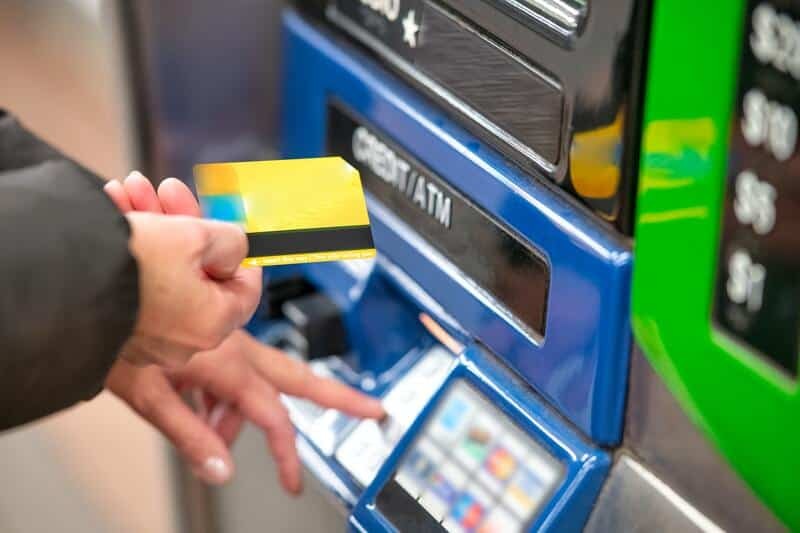In the current market situation, unsecured bonds are experiencing a significant increase in popularity. This can be attributed to the low-interest rates in the bond market, which have led to a search for higher-yielding investments.
As economies continue to recover from the pandemic, companies and governments are issuing more bonds to raise capital, making unsecured bonds an attractive option for investors seeking returns.
It is crucial for investors to understand the basics of unsecured bonds, including their risks, potential returns, and the issuer’s creditworthiness. This requires thorough research, analysis, and an understanding of the economic factors that can impact the issuer’s creditworthiness.
The purpose of this blog is to provide investors with valuable insights into unsecured bonds. We will discuss the basics of unsecured bonds, the current market situation, and the factors that can impact their performance.
Our goal is to provide investors with the necessary information to make informed decisions when considering investing in unsecured bonds.
Through this blog, we hope to offer a comprehensive guide to help investors understand the ins and outs of unsecured bonds and make profitable investment decisions.
If you are looking to invest as an expat or high-net-worth individual, which is what I specialize in, you can email me (advice@adamfayed.com) or WhatsApp (+44-7393-450-837).
Table of Contents
Fact 1: What are unsecured bonds?
Unsecured bonds are a type of fixed-income investment that is not backed by any assets or collateral. Instead, investors rely solely on the creditworthiness of the issuer to receive repayment of the bond’s principal and interest.
In other words, if the issuer defaults on the bond, the investor has no claim on any specific assets.
Unsecured bonds differ from other fixed-income investments, such as certificates of deposit (CDs) or money market funds.
CDs are typically issued by banks and are insured by the Federal Deposit Insurance Corporation (FDIC), meaning that investors have a certain level of protection against default.
Money market funds, on the other hand, invest in short-term, low-risk securities such as government bonds and commercial paper. Although they are not insured, they are considered to be very low risk.
Unsecured bonds can be further classified into two main categories: investment-grade and high-yield.
Investment-grade unsecured bonds are issued by companies or governments with a strong credit rating, indicating a low risk of default. These bonds typically have a lower yield than high-yield bonds but are considered to be a safer investment.
High-yield unsecured bonds, also known as junk bonds, are issued by companies or governments with a lower credit rating, indicating a higher risk of default. Because of this increased risk, high-yield bonds offer a higher yield than investment-grade bonds to compensate investors for the added risk.
However, investing in high-yield bonds carries a higher risk of default and is generally only recommended for investors with a higher risk tolerance.

Fact 2: How do unsecured bonds generate income?
Unsecured bonds generate income in the form of periodic interest payments, which are typically made twice a year until the bond reaches maturity.
The interest rate on unsecured bonds is determined by a variety of factors, including the creditworthiness of the issuer, prevailing interest rates in the market, and the supply and demand for the bond.
When an issuer first decides to offer an unsecured bond, it typically hires an underwriter to help determine the appropriate interest rate. The underwriter will evaluate the creditworthiness of the issuer and the overall demand for the bond to determine an appropriate interest rate.
This rate is usually expressed as a percentage of the bond’s face value and is commonly referred to as the “coupon rate.”
Once the bond is issued, its price will fluctuate based on changes in the overall interest rate environment and the perceived risk of the issuer.
If interest rates in the market rise, the value of the bond will decrease, and vice versa. Similarly, if the creditworthiness of the issuer deteriorates, the value of the bond will decrease.
Investors in unsecured bonds can earn a profit if the value of the bond increases or if they hold the bond until maturity and receive the full face value of the bond.
However, if the issuer defaults on the bond, investors may lose some or all of their investment.
Fact 3: What are the risks associated with investing in unsecured bonds?
Like any investment, unsecured bonds carry risks, and investors must be aware of these risks before investing.
One significant risk associated with unsecured bonds is credit risk, which refers to the possibility of the issuer defaulting on the bond, leaving investors with little or no recourse to recover their investment.
Credit risk is the most significant risk associated with unsecured bonds. It is the risk that the issuer may not be able to make interest payments or return the principal amount when the bond matures.
Credit risk can be increased by a variety of factors, including the financial health of the issuer, changes in the issuer’s industry, or changes in the economy.
Investors can mitigate the risks associated with investing in unsecured bonds in several ways. One way is to diversify their investments across different issuers and industries, reducing the overall impact of any one default.
Another way is to invest in investment-grade bonds, which have a lower risk of default, although they also offer lower yields. Investors can also perform their own research to evaluate the financial health and creditworthiness of the issuer before investing.
Another way investors can mitigate risks is by using a bond ladder strategy, which involves investing in bonds with different maturities. This strategy can help spread the risks associated with rising interest rates or defaults, as investors can sell bonds that are maturing and reinvest the proceeds in new bonds with different maturities.
Finally, investors can also use bond funds to invest in unsecured bonds. Bond funds are managed by professionals, which can help mitigate some of the risks associated with investing in unsecured bonds.
However, it’s important to note that bond funds also carry their own risks, such as interest rate risks and management risks.

Fact 4: How do unsecured bonds fit into an investment portfolio?
Unsecured bonds can be an important component of a diversified investment portfolio. They offer a predictable income stream and can help balance the riskier investments in a portfolio, such as stocks.
When considering adding unsecured bonds to an investment portfolio, it’s important to consider factors such as the creditworthiness of the issuer, the bond’s yield and maturity, and the overall interest rate environment.
Additionally, investors should consider their own risk tolerance and investment goals to determine the appropriate allocation of unsecured bonds in their portfolio.
One way to assess the creditworthiness of an issuer before investing in unsecured bonds is to look at the bond’s credit rating.
Credit ratings are assigned by independent rating agencies, such as Moody’s or Standard & Poor’s, and reflect the issuer’s ability to meet its financial obligations. Ratings range from AAA (the highest) to D (default), and ratings below BBB- are considered non-investment grade or high-yield.
Investors should also review the issuer’s financial statements and annual reports to evaluate its financial health and management practices. This information can help investors assess the issuer’s ability to generate enough cash flow to meet its obligations and pay its debts, including interest payments on its bonds.
Another important factor to consider is the bond’s yield and maturity. Higher-yielding bonds typically carry higher credit risk, so investors must consider the trade-off between yield and risk when selecting bonds.
Additionally, bonds with longer maturities may carry more interest rate risk, as the price of the bond can be more affected by changes in the overall interest rate environment.
Fact 5: What are the tax implications of investing in unsecured bonds?
The tax implications of investing in unsecured bonds depend on several factors, such as the type of bond, the investor’s tax bracket, and the holding period of the bond.
Interest income from unsecured bonds is generally taxable at the federal and state level. Interest income is reported on the investor’s tax return as ordinary income and is subject to the investor’s marginal tax rate.
If the unsecured bond is held in a tax-advantaged account, such as an IRA or 401(k), interest income is not taxed until it is withdrawn from the account.
This can be advantageous for investors who are in a higher tax bracket or who have a significant amount of interest income.
If the investor sells the unsecured bond before it matures and realizes a capital gain or loss, the gain or loss is subject to capital gains tax. The capital gains tax rate depends on the investor’s holding period and tax bracket.
Additionally, investors should be aware of the potential for the bond issuer to call the bond before maturity, which can result in a taxable gain or loss.
If the bond is called and the investor realizes a gain, the gain is subject to capital gains tax. If the investor realizes a loss, it can be used to offset other capital gains up to a certain limit.
Fact 6: How do you buy and sell unsecured bonds?
Unsecured bonds can be bought and sold through a broker or financial institution that offers bond trading services. Investors can buy unsecured bonds through an initial public offering (IPO) or on the secondary market.
In the IPO, the issuer offers the bonds to the public for the first time, and investors can purchase the bonds at the offering price.
After the IPO, unsecured bonds are traded on the secondary market, where they are bought and sold among investors.
The secondary market for bonds is typically less liquid than the stock market, meaning there may be fewer buyers and sellers at any given time.
Additionally, the market price of the bond may be affected by changes in interest rates, inflation, and the creditworthiness of the issuer.
Investors can place an order to buy or sell unsecured bonds through their broker or financial institution. The price of the bond may be quoted as a percentage of face value, with the actual price determined by the prevailing market conditions at the time of the trade.
When buying or selling unsecured bonds, investors should consider factors such as the creditworthiness of the issuer, the bond’s yield and maturity, and the overall interest rate environment.
Additionally, investors should be aware of any fees or commissions associated with buying and selling bonds, which can affect the overall return on their investment.

Conclusion
Overall, unsecured bonds can be a valuable addition to a well-diversified investment portfolio, but it is important for investors to do their due diligence and seek the advice of a financial planner.
They can be an attractive investment for those seeking fixed income with a potentially higher yield than other fixed income investments. However, they also carry a higher risk due to the creditworthiness of the issuer. Investors should assess their risk tolerance and investment goals before investing in unsecured bonds.
By taking a long-term approach and remaining disciplined in their investment strategy, investors can potentially earn higher returns while managing the risks associated with investing in unsecured bonds.
Pained by financial indecision? Want to invest with Adam?

Adam is an internationally recognised author on financial matters, with over 760.2 million answer views on Quora.com, a widely sold book on Amazon, and a contributor on Forbes.



